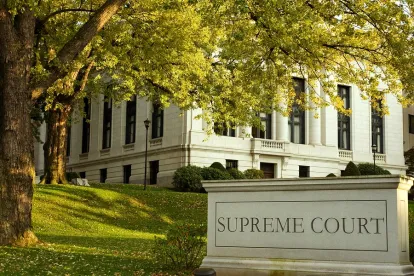The past several years have seen a slew of high-profile excessive force cases against law enforcement officers, often highlighted by cell phone video. These cases have placed increasing pressure on local police departments, which continue to struggle with balancing the public interest in community safety against the individual rights of suspects on the street. At the highest level of the legal landscape, however, the United States Supreme Court recently issued a decision that arguably expands the qualified immunity defense, at least in certain kinds of deadly force cases.
Mullenix v. Luna, 577 U.S. __, Index No. 14-1143, decided November 9, 2015, involved a high-speed chase in Tulia, Texas. Officers set up a “spike strip” beneath a bridge and took up nearby positions. As the suspect was speeding toward the bridge, another officer, Trooper Chadrin Mullenix, fired six shots at the suspect’s vehicle in an attempt to disable it before it reached the bridge. The car continued forward where it engaged the spike strip, hit the median, and rolled over two and a half times. It was later determined that the suspect was killed by Mullenix’s shots, four of which struck him in the upper body.
The suspect’s estate commenced an action pursuant to the Civil Rights Act of 1871 (42 U.S.C. §1983), alleging that Mullenix had used excessive force in violation of the suspect’s Fourth Amendment rights. Mullenix’s motion for summary judgment on grounds of qualified immunity was denied, the district court holding that there were fact issues as to whether the suspect posed an “imminent” threat. The Fifth Circuit affirmed. The U.S. Supreme Court accepted certiorari and reversed, holding that Trooper Mullenix was entitled to qualified immunity and dismissed the civil claim against him.
It remains to be seen whether Mullenix will be applied outside the context of high-speed chases. Nevertheless, some general observations can be made at this time. First the Court rejected generalized definitions of “rights” for purposes of the qualified immunity defense. It is not enough to say that the use of excessive force violates the Fourth Amendment; the right must be defined in the context of the particular facts of each case. Second, the Court adopted a formulation of qualified immunity that is favorable to officers, finding, in effect, that if even one “reasonable officer” could disagree as to whether a right was clearly established in the circumstances facing the officer at the time, then the defense would apply. Finally, the Court stressed officer safety over what might be seen as a rash decision by an officer to use deadly force. In a dissenting opinion, Justice Sotomayor expressed the view that Trooper Mullenix had blindly and recklessly shot at a moving vehicle without giving the spike strip a chance to work. The majority opinion, issued per curium, put that concern to one side and focused instead on the risk to the officers stationed near the spike strip.
It should be interesting to see whether lower courts will apply Mullenix in deadly force cases that do not involve high speed car chases. In the meantime, the decision certainly offers support for arguments expanding the scope of the defense.



 />i
/>i

